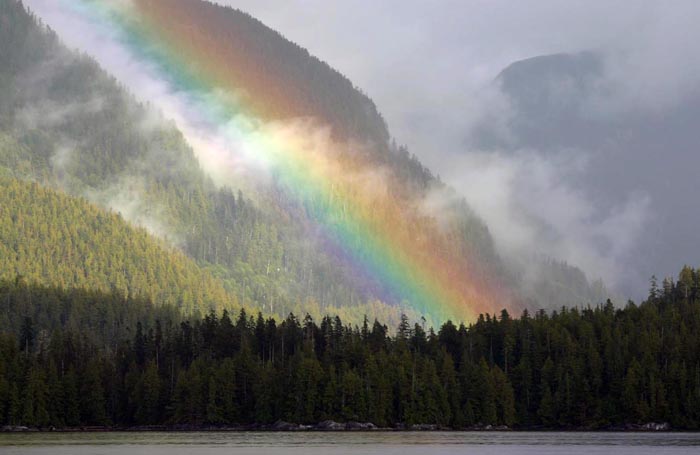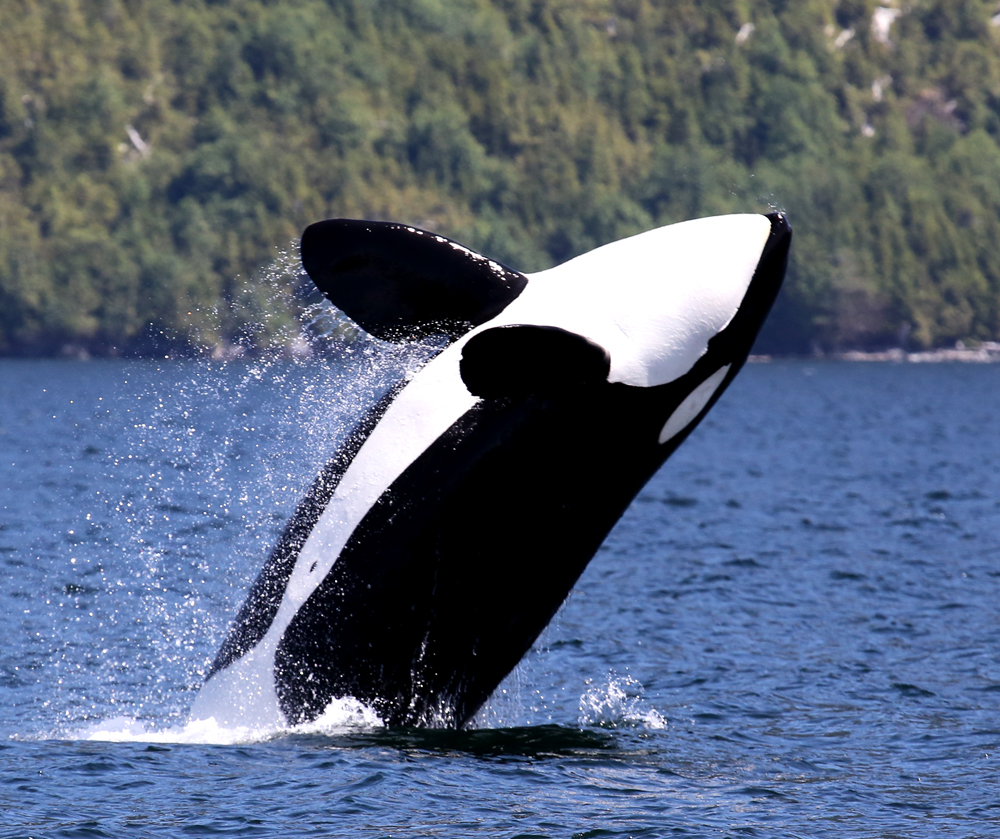Written By Sam Watson
When I arrived in Hartley Bay last year, it was sunny, 80 degrees Fahrenheit, and before I left the small fishing village, I went for a dip in a nearby swimming hole.
When I arrived this year, I bundled into a cold-weather survival suit and held on for dear life as the Elemiah bounced its way towards Whale Point, my home till August. Hermann Meuter, co-director of the North Coast Cetacean Society, didn’t seem worried about the way the little boat was tossing in waves that seemed close to her size, but the cold, stinging rain was not particularly pleasant on my face. It was, all in all, a very different welcome.
Still, though, it seemed like the spirit of the place wasn’t angry, merely curious. Since I’d been here last, I’d changed majors at college, finished college, and been accepted to graduate school, so I think the rain and waves were a way for the place to make sure I still had a wild spirit. She was just being a little mischievous.
She needn’t have worried. I’ve told many people this over the past year, but the Great Bear has a way of getting a hold of you and attaching herself to the deepest parts of your soul.

In other words, once you’ve been here, you really have to come back, and she’d remind me why that’s the case the very next night, an evening that couldn’t have been more different from my journey to Whale Point – calm, peaceful, and full of whales.
The night of my first full day, we’d gotten reports of orca to the east of our location. We didn’t expect to see them before dark, but, like the Great Bear herself, killer whales have their own plans. I was the first to notice them, black knife fins racing through the glassy water, and I pointed them out thinking we’d mosey down to the Elemiah, hop on, take some photos, and return.
When I turned around, thirty seconds after I spoke, the small lab was deserted, and I saw Hermann, closely followed by the other interns, moving at a full sprint for the boat.
In retrospect, I don’t know why I expected anything else.
It was a pod of residents, the primarily fish eaters, four in total – one male, [two female, and a juvenile. They were part of the A35 matriline, we were only able to properly ID A56 and A90 and not sure where the rest of the family were. We spent over an hour with them; one breaching not more than five meters away, showcasing the power of the whalel.
Even more powerful, though, was the juvenile swimming in front of us. Two meters out, a meter down, effortlessly . It turned on its side and looked right at us. The greenish water tinted its white flanks, and it was as if all the energy of the Great Bear was focused through its eye, examining us, evaluating us, wondering if we were able to listen to what this place would tell us over the summer.
Welcome back, she whispered a few moments later.
Welcome back indeed.


